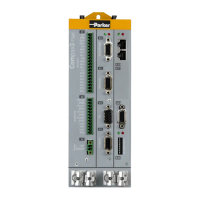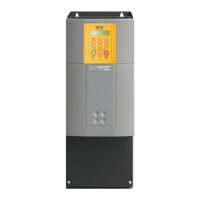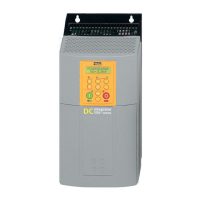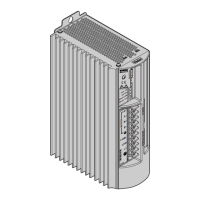Parker EME
Setting up Compax3
192-120114 N5 C3I22T11 June 2008 257
Sine at 204Hz
Δf=8Hz / f0=204Hz = 25,5⋅Δf / frequency does not correspond to the frequency
resolution!
The sine frequency has only minimally changed, due to which it does, however, no
longer match the frequency resolution (204Hz/8Hz=25,5) => leak effect
Two consequences are visible:
The spectre is faded in the ranges at the right and at the left of the sine fre-
quency. In this range, an amplitude is displayed, even though these frequen-
cies are not contained in the real signal.
The height of the peak of the sine frequency is reduced, => it seems as if the
signal energy is leaking out and distributing over the spectre. This explains the
term leak effect.
Windowing
With the aid of the windowing, leak effects can be avoided. There are many diffe-
rent kinds of windowing, who do all have the same restrictions.
windowing reduces the total energy of the analyzed signal, which results in a
reduced amplitude of all measured frequencies.
Individual frequency peaks do not appear so sharp and narrow as with measure-
ments without windowing.
Sine at 200Hz and 204Hz with Hanning windowing
f
0
=200Hz f
0
=204Hz
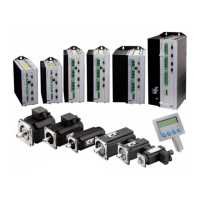
